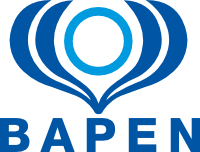Home parenteral nutrition (HPN) is needed for patients with acute or chronic intestinal failure in whom nutritional and / or water and electrolyte balance cannot be corrected by oral or enteral feeding and in whom PN is feasible at home (Messing B et al in Intestinal Failure 2001). While HPN was first described in 1970 (via an arterio-venous fistula), it has been used as a treatment via a central catheter in the UK since the 1980s and the number of patients have been increasing so that the total number exceeded 1000 in 2012 (British Artificial Nutrition Survey (BANS) reports). Over the last 5 years there has been a greater than 200% increase in new HPN patients.
The reasons for starting PN include a short, leaking (perforated), obstructed or dysfunctional gut or extensive small intestinal mucosal disease. Occasionally it is due to no enteral access or after unsuccessful enteral nutrition. Consideration for stopping HPN may be when oral / enteral intake is resumed, a problem has resolved (e.g. obstruction or entero-cutaneous fistula), or the gut has adapted (e.g. after colon continuity has been restored) or it is no longer in the patients’ best interest”.
The aims of HPN include preventing or treating undernutrition and/or dehydration, helping a patient become fit for surgery, reducing diarrhoea/vomiting, reducing abdominal pain caused by oral/enteral feeding and improving the quality of life.
A patient having HPN or his/her family or carers have much to learn before/while a patient is at home on PN. They need to learn about the principles of asepsis, basic gut and vascular anatomy and the complications of PN, and about their underlying illness. They have to learn the skills of hand washing, sterile techniques, connecting and disconnecting a feed, changing a dressing, flushing a line and managing a pump. To do this personally, they need to be physically fit (to lift pump and bags), with good manual dexterity and vision. They need to be psychologically motivated and manage the PN in an appropriate home environment. They may need to learn how to adjust to lifestyle events such as bathing, showering, swimming, partaking of sports and travel. In addition to the PN they may also have to cope with wound/stoma management, chronic pain and much medication (e.g. analgesics, proton pump inhibitors, anti-diarrhoeal and anti-emetic drugs).


